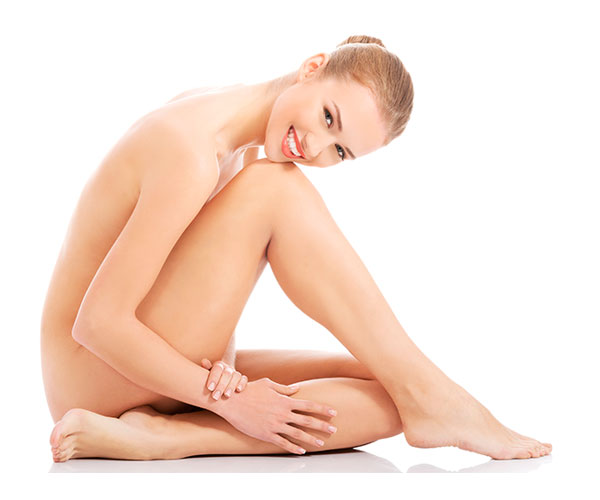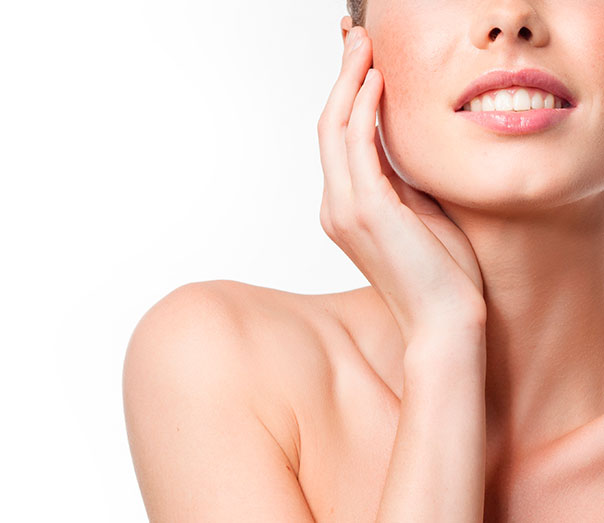Skin is defined as sensitive when an overreaction occurs against various stimuli such as environmental factors or topical products.
Currently epidemiological studies collect an upward trend in the perception of people who complain of having sensitive skin, without significant distinctions between genders.
Skin tone seems to have a direct influence on this perception, being lighter skins those more likely to sunburn, this is an indicator commonly associated with sensitive skin.
Skin sensitivity also seems to vary with age, being more pronounced in the early stages of life and in old age. According to the different skin types, the population which manifests more on this perception of sensitive skin are those with dry skin type, followed by those with oily skin and finally normal skin.
Due to physiological and neurosensory differences from the different parts of the body, the most affected area is usually the face and, to a lesser extent, hands, scalp and feet.

This condition has an important psychological impact in people who suffer it with a significant deterioration in their quality of life.
This is a syndrome from multifunctional origin, where skin hyperreactivity can be genetic but its manifestation can be triggered or aggravated by several factors:
- Topical Products
The use of topical products, certain drugs and cosmetics as well as physical treatments such as peelings, lasers or UVA rays, can develop sensitive skin symptoms in the areas of application.
- Environmental factors
Cold, sun, wind, heat, air conditioning and pollution favour sensitive skin manifestation, especially in cold and humid environments, as they cause a decrease in the water content of the stratum corneum.
Excessive cold reduces the secretions that keep the hydrolipidic film, while heat stimulates sweating, which once evaporated causes the skin to dry, being more prone to irritation.
Solar radiation and environmental pollutants generate free radicals that weaken the skin’s natural defences.
Sun exposure causes dryness and irritation of the skin.
- Lifestyle
Factors such as diet (excess of alcohol, smoking, coffee or spices), hygiene habits (excessive or high temperature washing, shaving, depilation and over usage of personal care products) and exposure to chemicals, all influence the sensitivity of the skin.


- Age
Babies’ stratum corneum is thin and has a limited barrier function, being very sensitive to physical, chemical and bacterial attack factors, as well as solar radiation.
With advanced age the skin barrier function weakens, there is a lipid deficit and a high transepidermal water loss, making the skin more susceptible to the action of other agents.
- Hormonal factors
Hormonal changes occurring throughout life -puberty, menstrual cycle, pregnancy and menopause- can affect the resistance to skin irritants.
- Skin Tone
Fair skins are more prone to sunburn and to developing skin sensitivity.
- Skin diseases
Acne, rosacea, atopic dermatitis or seborrheic dermatitis make the skin more sensitive to irritants such as dyes, alcohol, perfumes, etc.
People who suffer from allergies are also more susceptible to sensitive skin.
Psychological factors can trigger frequent skin hypersensitivity, being stress and lack of sleep the most important ones.
If these factors are accompanied by poor diets and low levels of hydration, the symptoms increase.

Skin protective functions
The skin’s hydrolipidic film, composed of water, fatty acids and lipids protects its surface.
Its slightly acid pH (about 5), protects the skin from bacteria and neutralizes alkaline agents such as soaps.
The stratum corneum is the physical barrier of the skin where lipids fill the spaces between the cells. Being permeable, it regulates fluid loss and penetration, and performs a key role in maintaining the hydration level of the skin to make it look soft and smooth.
All these processes are governed by enzymatic reactions and when the skin type is sensitive these processes are affected, deteriorating the natural barrier function and reducing the lipid synthesis.
As a result, the transepidermal water loss increases, and skin irritants find an easy way to penetrate into the skin layers.
Sensitive skin expressions
The following phenomena have been observed:
- Reduction of the skin tolerance level.
- Deterioration of the barrier function, increasing the transepidermal water loss.
- Sensorineural activity disorders of the skin nerves.
It has been established that the trigger mechanism for sensitive skin is the abnormal penetration of irritants, due to impaired barrier function together with an acceleration of the nervous response.
This abnormal penetration is caused by an increase in the permeability of the stratum corneum, due to thinning thereof and to the impaired quality of intracellular lipids.
Consequently, there is a skin’s threshold tolerance decrease as the nerve endings protection are altered, increasing, therefore, the reactivity to irritants and exogenous agents.
Depending on the intensity of the symptoms, there are three degrees of sensitive skin:
Treatment
Every treatment involves avoiding triggering agents. The applied cosmetics should have few ingredients and absence of sensitizers and irritants agents.
For prevention and aid the following guidelines are highly recommended:
- Using very few cosmetics, always choosing those for sensitive skin.
- Testing first time use cosmetics in the inner forearm before applying them. Evaluate possible adverse effects on the area for 24 hours after the test.
- Free of perfumes and alcohol formulations. Some dyes may also cause adverse effects in people with sensitive skin.
- Avoiding alkaline soaps.
- Avoiding very frequent and high temperature showers.
- Using soft texture moisturizers with ingredients that provide extra skin hydration.
- Dry skin with soft touches, without rubbing.
- In high temperature or air conditioning environments, apply moisturizer several times a day.
- Using hygienic products with soft and non-irritating surfactants to avoid weakening the lipid layer of the skin.
- Avoid physical and chemical exfoliating products, since they destroy the hydrolipidic film. Apply gentle moisturizing aftershave products..
- Avoid products with alpha hydroxy acids (AHAs), retinol or tretinoin.
- Stop using products that cause adverse reactions or discomfort when being applied.
- Avoid sudden temperature changes, sun, heat and cold exposure. Do not sunbathe in the mid hours of the day and always apply sunscreen products. Avoid tanning lamps such as UV rays.
- Limit alcohol consumption, coffee and spices.
- Avoid smoking, since it produces harmful free radicals to the cellular structure of the skin.
- Follow a balanced diet rich in antioxidants (Vitamins A, E and C).
- Avoid stress and sleep the appropriate hours for every age.

